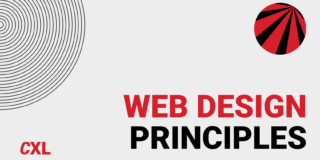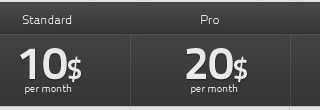Why is it that some books become bestsellers and others can hardly sell a 100 copies? Why do you read some books with passion and interest but can’t get past the first 10 pages of others? What’s the difference?
It’s simple: word choice. The words you use—and the order in which you use them—make all the difference when it comes to crafting sales copy that wins sales. It doesn’t matter if it’s books or websites, but words do matter in sales copy, so pick yours carefully.
As Mark Twain said, “The difference between the right word and the almost-right word is the difference between lightning and a lightning bug.”
What is sales copy?
Sales copy is the text that convinces and persuades customers to buy a product or service. This type of copywriting usually implies showing clearly the benefits and value of your product in order to encourage people to make the purchase.
7 principles of effective sales copywriting
Here are seven principles of effective sales copy:
1. Know who you’re talking to
Look at the three pictures below. A skater dude, a busy mom, and a backpacker. If you’re writing sales copy for a product, you should always talk to a specific person.

You should talk differently to each of the people below—no brainer, right? Still, most people try to write copy that works for everybody. Try to figure out the common denominator among all the potential buyers.
Create a customer persona. Describe this person. Give them a name. Imagine what this person is like, how they spends their days, and what their key issues are. Your sales copy will be much better if you write it with a specific person in mind.
If you need some more help with the process of creating your persona, check out these articles:
- How to Identify Your Online Target Audience and Sell More
- How To Create Customer Personas With Actual, Real Life Data
- How to Drive Product Growth with Behavioral Personas
- How Data-Driven Marketers Are Using Psychographics
- How to Build Robust User Personas in Under a Month
- Learning Styles: The Impact on Marketing Messaging
Or, if you want to go more in-depth, check out our buyer persona course.
2. Write as if you we’re talking to your friend
Don’t forget you’re dealing with people. Even if you sell B2B products, there’s always a person with a name and an identity reading your copy and making decisions.
If you know this, then why are you writing business jargon? Forget buzzwords (“social media management system”) and nonsense that doesn’t mean anything (“flexible solutions”). Say it as it is.
Use the “friend test.” Read your copy, and if you spot a sentence you wouldn’t use in a conversation with your friend, change it.
Human relationships are about communicating. Business jargon should be banished in favour of simple English. Simplicity is a sign of truth and a criterion of beauty. Complexity can be a way of hiding the truth.
– Helena Rubinstein, CEO, www.labgroup.com
3. Work hard to create a compelling headline
People don’t read; they skim. The main thing they do read is the headline, so make it good. If the headline doesn’t capture their attention and make them interested to read further, the rest of the copy doesn’t matter.
On the average, five times as many people read the headline as read the body copy. When you have written your headline, you have spent eighty cents out of your dollar.
– David Ogilvy, ad guru
Questions to think about while coming up with a great headline:
- What does your prospect care about the most?
- What’s their biggest problem?
- What’s their biggest goal or dream?
- How can you help them achieve it or solve it?
The best headlines communicate a direct benefit. It’s hard to know off-the-bat which headline will work the best. Test them.
4. Don’t make customers think too much
Thinking is hard. Most people don’t want to do it.
They look at your copy and want to understand what you’re offering. If it’s not obvious in the first few seconds, they’ll move on.
Your main headline might be benefit-oriented, but, underneath it, describe in 2–3 lines:
- What your product is;
- What your product does;
- Who you product is for.
A photo or screenshot of the product is a smart idea—people “get” images much faster than text.
5. Avoid all caps and don’t use exclamation marks
There are no good reasons to put your text in all-capital letters. Putting a lot of words in all caps or bold slows down reading, comprehension, and interest.
Lower-case letters have more shape differences than capital letters. Text in lower case is recognized faster than all caps.
Also, using more than one exclamation mark in a row just shows that you’re 12 years old. Nobody wants your stuff more because you add exclamation marks. Au contraire.
6. Make your text easy to read
If you want people to read your text, make it readable. The most interesting copy in the world will go unread if the readability is poor.
Key things to improve readability:
- Font size: minimum 14px, preferably 16px;
- Line height: 24px;
- New paragraph every 3–4 lines (empty line between paragraphs);
- Use sub-headlines as much as you can (at least after every two or three paragraphs);
- Use images to break text apart. People read more if patterns are broken.
- Line width: max 600px. If your lines are too long, people won’t read them.
- Use dark text on a light background (ideally black text on white background).
7. Make the copy as long as necessary
Tests have shown that 79% of people don’t read. However, 16% read everything. Those 16% are your target group—the most interested people.
If people aren’t interested in what you are selling, it doesn’t matter how long or short your sales copy is. If they are interested, give them as much information as possible. A study by the International Data Corporation (IDC) showed that 50% of uncompleted purchases were due to lack of information.
Your readers can always skip parts of your sales copy and click “Buy” once they have the information they need. But if they read through the whole thing and they’re still not convinced or have questions, you have a problem.
WATCH: Momoko Price debunks 12 copywriting myths

Conclusion
Great sales copy is essential—and elusive. The best copy ditches the corporate jargon and speaks directly to customers.
If you can remember these seven principles of sales copywriting, you’ll be way ahead of most (and have the sales numbers to prove it):
- Know who you’re talking to.
- Write to your friend (wife, colleague, etc.).
- Work hard to create a compelling headline.
- Don’t make them think.
- AVOID ALL CAPS AND DON’T USE EXCLAMATION MARKS!!!
- Readability matters.
- Sales copy should be as long as necessary.



Another important component that also needs to be included in a sales copy is a call to action message. This has to be done tactfully so as not to appear like you are pushing so hard to make a sale. Nobody want to be sold to.
Call to action can be there to achieve varies goals this includes increasing your opt-in list, add people to your fanpage or twitter account and so on. This are forums that will help you build relationships with your target audience thus make even more sales online.
I am a newbie at all this and I tried to take notes. This is all so relevant. I ended up with every word in my notes. I love how informative you are and how to the point all of this information is. I could have searched for weeks to find this gold. Thank you for this.